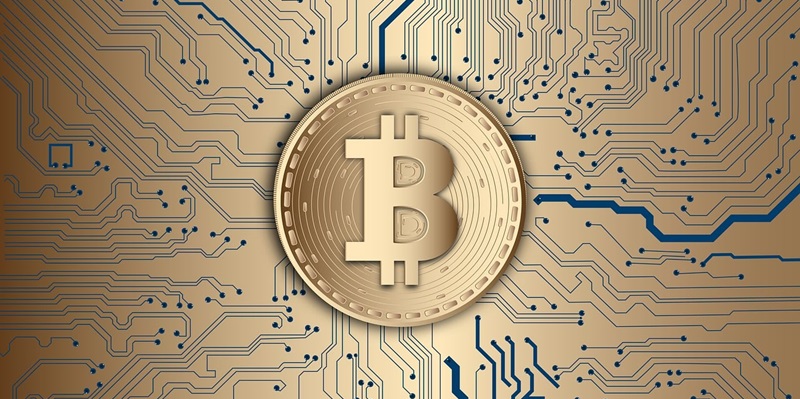After a brief dip to $56,000, Bitcoin quickly regained ground and climbed above the critical $58,000 support level, signaling a potential bullish breakout on the horizon. This recovery comes in the wake of leveraged trader liquidation, a phenomenon that often precedes enhanced price volatility. The confidence shown by institutional investors in Bitcoin is unmistakable, particularly with increased acquisitions through spot BTC ETFs, cryptocurrency stocks, and direct procurement. As investors jostle to solidify their positions, the rise in stablecoin supply on centralized exchanges post-"Black Monday" on August 5 is capturing significant attention. Major stablecoin issuers have minted over $1.5 billion in response, which has since been deposited into various exchanges, suggesting a bullish market sentiment.
The Role of Stablecoins in Market Dynamics
Historical data offers an intriguing perspective: a rise in the supply of stablecoins typically correlates with a bullish outlook for the market. Cumberland, a key player in the crypto liquidity space, has been especially active during this period. The firm has been busy receiving and depositing hefty amounts of USDT into prominent exchanges like Coinbase, Kraken, and OKX, acting on behalf of institutional clients. Meanwhile, Circle, another heavyweight in the stablecoin arena, has been aggressively minting USDC on the Solana network. This activity has significantly boosted liquidity, particularly for meme coins, underscoring the increasing role of stablecoins in amplifying market dynamics. Consequently, the stablecoin supply on centralized exchanges now stands at a multi-month high, indicating heightened purchasing power that could energize the broader cryptocurrency market.
Economic conditions also play a crucial role in shaping market sentiment, and forecasts hint at a cautious optimism despite recent turbulence driven by carry trades between the Japanese Yen and other currencies. Stability in stablecoin supply is often a precursor to bullish trends, especially in the crypto market. While the months of August and September are typically bearish for cryptocurrencies, there is a prevailing belief that the fourth quarter may defy historical patterns and usher in a bullish phase. Key events on the economic calendar, such as speeches by Bank of Japan’s Governor Kazuo Ueda and Federal Reserve Chair Jerome Powell, are eagerly anticipated. These heavyweight policymakers are expected to shed light on the future economic landscape, including potential shifts in financial policies that could further influence cryptocurrency markets.
Institutional Investors and Market Sentiments
Recent actions of major institutional players like Cumberland and Circle only add to the market’s buoyancy. Cumberland’s significant flows of USDT into major exchanges illustrate the level of prep work being undertaken to capitalize on anticipated market moves. Simultaneously, notable movements of other cryptocurrencies contribute to the complex mosaic of market sentiment. For instance, Ethereum co-founder Vitalik Buterin’s decision to move a large number of ETH to a crypto mixer suggests private repositioning or strategic transfers, reflecting how influential figures are also actively engaged in navigating the volatile landscape.
On another front, Galaxy Digital, a premier player in the cryptocurrency domain, has reportedly expanded its Bitcoin holdings with a substantial acquisition worth $23.4 million. Such high-profile acquisitions further underline continued institutional interest and confidence in the cryptocurrency market. Leading financial institutions’ involvement not only provides liquidity but also fosters trust, fundamentally strengthening the overall market framework. Consequently, Bitcoin appears poised for a significant bullish breakout by the year’s end, provided it maintains the critical support range of $56,000 to $58,000. However, it’s crucial for investors to consider that failure to hold this range could trigger a corrective phase, potentially bringing Bitcoin down to around $48,000 before a rebound occurs.
Impact of Economic Policies on the Crypto Market
Recent activities by major institutional players like Cumberland and Circle add to the market’s buoyancy. Cumberland’s significant USDT inflows into major exchanges indicate extensive preparation to capitalize on upcoming market movements. Concurrently, notable crypto movements contribute to market sentiment complexity. For instance, Ethereum co-founder Vitalik Buterin’s shift of a considerable amount of ETH to a crypto mixer implies private repositioning or strategic transfers, showing how influential figures navigate the volatile landscape.
Additionally, Galaxy Digital, a premier player in crypto, reportedly expanded its Bitcoin holdings with a $23.4 million acquisition. Such high-profile buys highlight continued institutional interest and confidence in the cryptocurrency market. The involvement of leading financial institutions not only boosts liquidity but also builds trust, bolstering the market framework. Consequently, Bitcoin appears poised for a bullish breakout by year’s end, provided it maintains critical support between $56,000 and $58,000. However, failure to hold this range could trigger a corrective phase, potentially bringing Bitcoin down to around $48,000 before rebounding.

